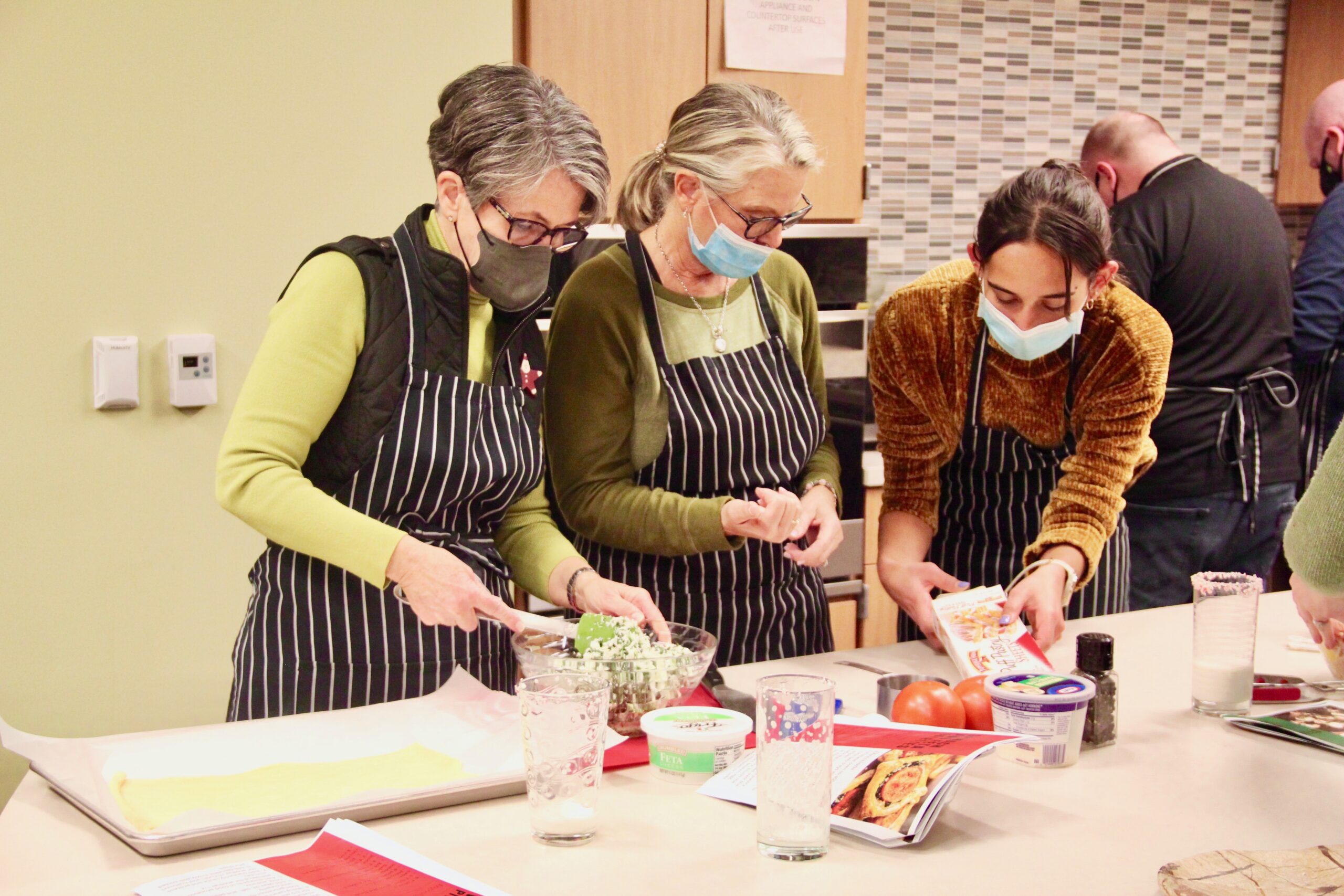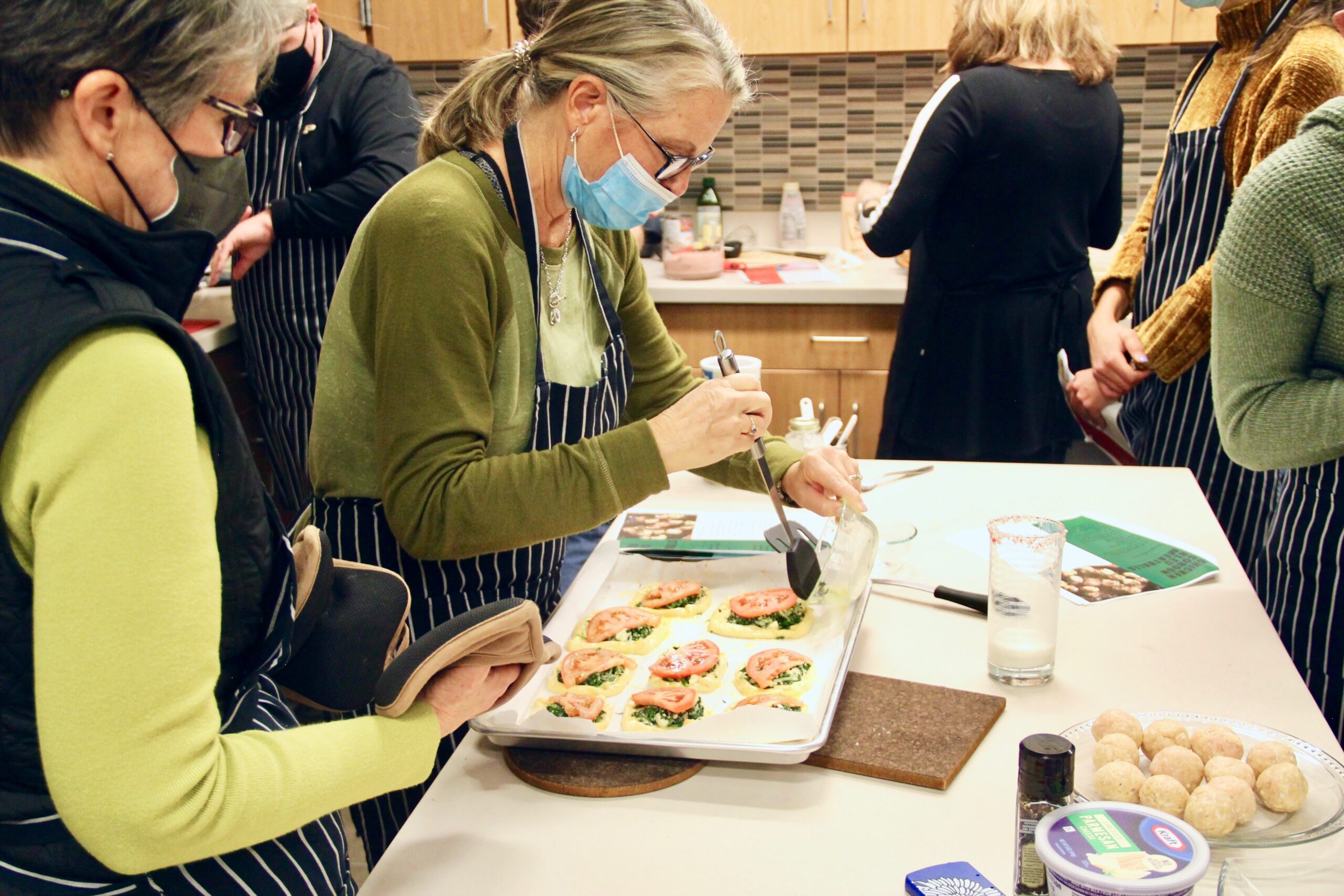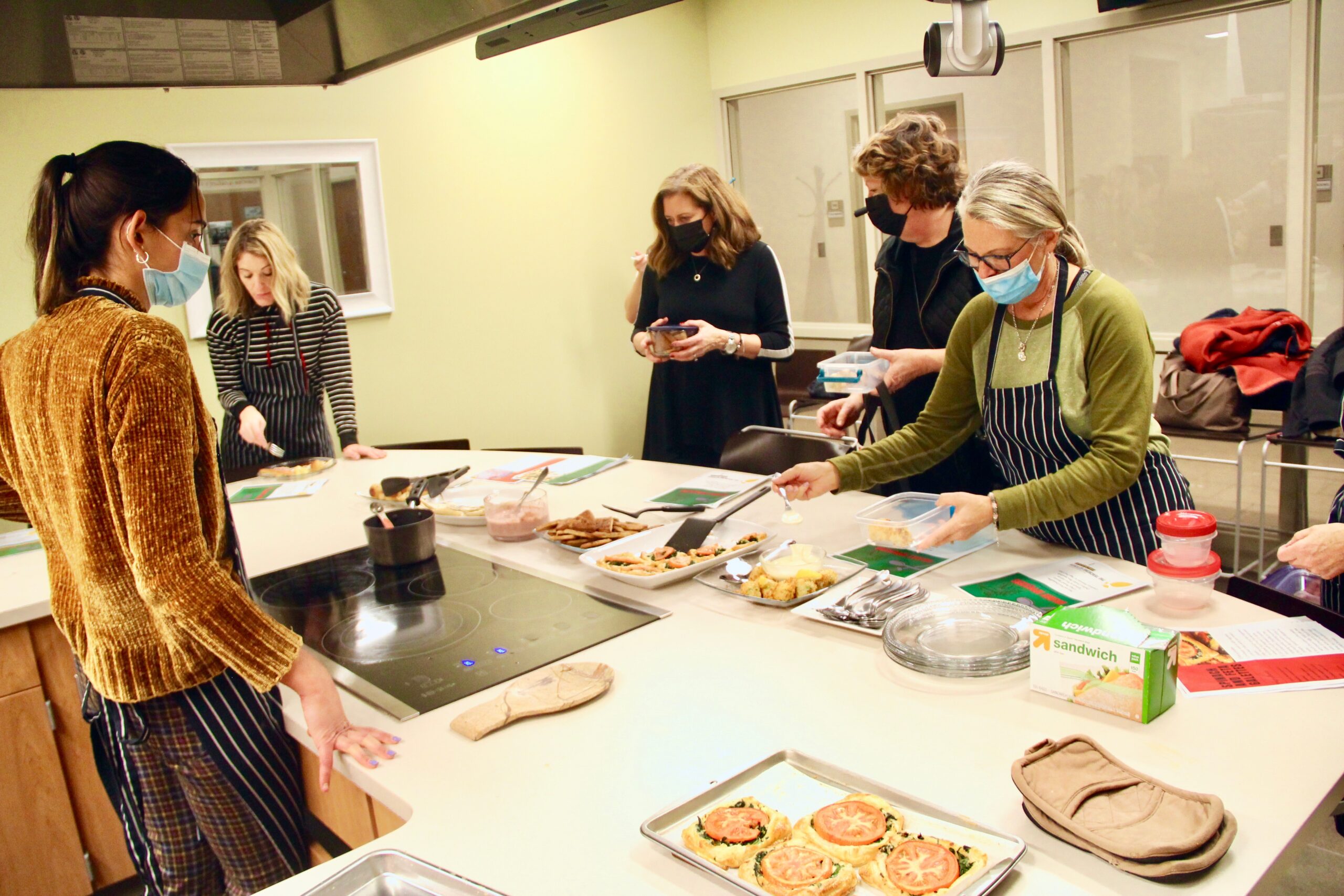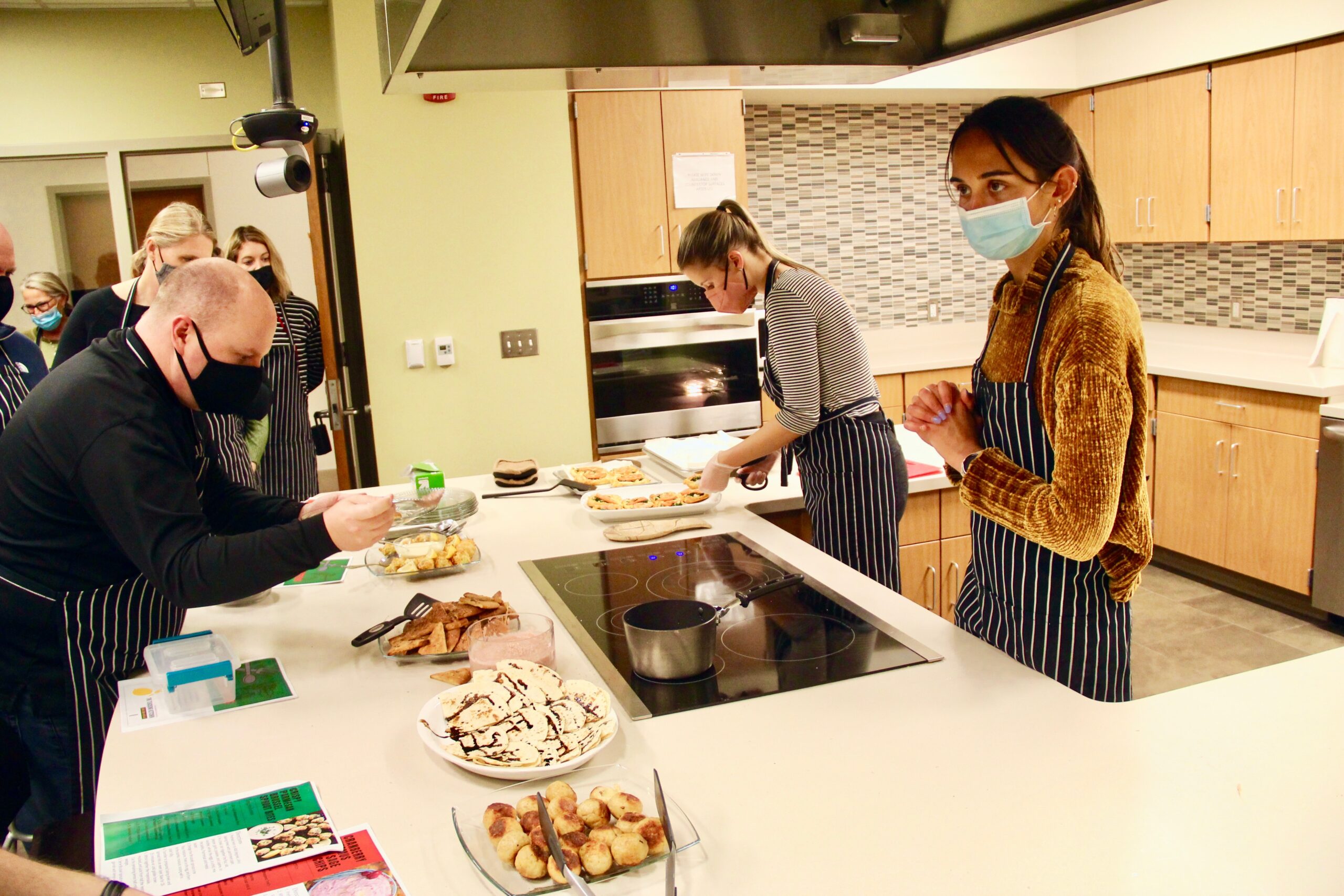Lab Culture: The Teaching Kitchen of Purdue Nutrition Science

Department of Nutrition Science junior Aguie Fainguersch, right, helps participants during a cooking demonstration in the Teaching Kitchen located in Lyles-Porter Hall.Tim Brouk
Written by: Tim Brouk, tbrouk@purdue.edu
As future dietitians and nutritionists, many Purdue University Department of Nutrition Science majors will interact with clients and the community as part of their future careers.
To train them for these jobs, the Teaching Kitchen has been a space that not only hosts dietetics classes but also intimate cooking classes open to the public. After about a year-long hiatus due to the COVID-19 pandemic, the classes returned this fall to the kitchen located in Lyles-Porter Hall.
During these evening events, undergraduate students select the theme, recipes and ingredients. They assist amateur chefs, answering questions and naturally implementing their nutrition know-how as they move around to the different pairs of attendees. On Dec. 1, the annual holiday appetizer night, “Ho, Ho, Hors D’oeuvres,” was a sold-out, festive affair. With Michael Bublé’s dulcet holiday tones in the background via Spotify, the students experienced how food can create fellowship among strangers.
“Just interacting with other people and learning about them and what they need,” said Rachel Clark, a clinical assistant professor and registered dietitian nutritionist. “Food is fun. Food is social, and it’s a time to be with other people.”
On the menu were pear and brie quesadillas, crispy Brussels sprouts, spinach and feta galettes, chicken cordon bleu meatballs, and cranberry hummus with sage pita chips. All of these recipes — some meatless, some meat-full — were selected after meeting the requirements of being completed from first mix to first taste in 90 minutes. The recipes must also give attendees chances to utilize the Teaching Kitchen’s countertop stove, oven, mixers and other appliances used to satiate and educate.
Aguie Fainguersch, a pre-med junior studying nutrition science and nutrition and dietetics, searched online for menu inspiration. She purchased ingredients and arranged them at different stations in the Teaching Kitchen for best use of space and time.
“The real challenge is finding unique recipes,” said Fainguersch, noting the combination of brie, pear and onion in the quesadillas was an attention-getting flavor combination. “I just use my own cooking experience and technical input from my peers and put it all together.”
Repeat customers
Clark maintains a healthy database and email list of loyal cooking-class participants, many of whom are Purdue students and staff members. Evan Tragesser, a developer for Purdue Online, is one of those.

Participants prepare spinach and feta galettesTim Brouk
“I took a couple classes before COVID, and they were great fun,” he said. “I’ve been watching for these to open back up. I really like being able to try a variety of things all in one night.”
Tragesser was part of team cranberry hummus and sage pita chips. The unusual dip was met with favorable reviews, implementing a new take on the traditional holiday use of cranberries. Baking his own pita chips was a unique experience as well.
“The pita chips are amazing,” Tragesser reported. “I liked the hummus a lot, and I’m usually not a huge cranberry fan, so I’ll keep that one in my back pocket for a while.”
At the end of “Ho, Ho, Hors D’oeuvres,” participants tasted all of the dishes and took leftovers home in containers they brought with them. When there wasn’t a pandemic, participants would sit around the large counter to finish the food and experience more of the fellowship that tasty food can bring.

Cooking demonstration participants get to try every dish at the end of the class.Tim Brouk
Love of cooking and recruitment
Fainguersch and her fellow Teaching Kitchen undergrads share a passion for health, nutrition and cooking. Working in the facility has enhanced her Purdue nutrition science experience.
“It’s a great break from the typical schoolwork that I’m involved in,” Fainguersch said. “It’s given me confidence to present in front of an audience and feel confident and communicate effectively with them because they are trusting me to make sure these recipes go through in a correct way.”
By day, the Teaching Kitchen not only hosts some classes but also a lot of questions from prospective students and their parents. The sleek facility is a highlight when tours of Lyles-Porter Hall are given.
“This kitchen is a super valuable resource for our department,” Clark said. “When I talk to parents and prospective students, they are often surprised and excited about the fact that we have this Teaching Kitchen where students can learn in a real-life environment, what we call experiential learning. Right now, at Purdue, there is a big drive to do more experiential learning. We are proud we’ve been doing this already for a while, and we are wanting to expand it and grow it as much as we possibly can.”

Fainguersch and fellow nutrition science major Katie Baughman, second from right, gain valuable experience leading cooking demonstrations that could serve them well in their future careers as dietitians and nutritionists.Tim Brouk
Lab Culture explores the people, research and traditions of the laboratories and facilities that help the Purdue College of Health and Human Sciences discover solutions to make lives better.